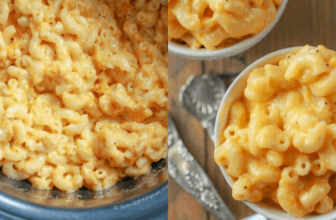
Note: The post below references my experiences with and thoughts on death and dying. These are topics we each must approach in our own way and in our own time. If you feel ready to dive in with me, read on.
“All we know is that everything ends. Our collective death denial inspires us to behave like we can live forever. But we don’t have forever to create the life we want.”
― Alua Arthur, Briefly Perfectly Human: Making an Authentic Life by Getting Real About the End
Facing the Fear: Turning Toward Death
Like people in the world of Harry Potter saying “He Who Must Not Be Named” instead of “Voldemort,” in our culture death is often treated as if the mere mention of it will bring it upon us. We speak in euphemisms and tiptoe around the topic.
Not talking about something gives it power. It makes it feel scary. But like birth, death is part of the human experience. Its certainty is what gives life its shape, meaning, and urgency.
When the Call Comes
When our kids were little, my sister and I would take turns visiting each other—kids in tow—for a week or more. I’d drive to Massachusetts in July to stay with my parents in our childhood home, and she’d come down to New Jersey in August. We were both stay-at-home moms then, and summer felt like a shared exhale. I don’t know who enjoyed the freedom of summer more—us or the kids.
That particular August, my sister and nephews had just arrived. We’d moved into a new home in a new town, and I was craving the ease and familiarity of time with family. Our first outing was to a local “spray-ground”—a water playground I’d recently discovered. We waited until late afternoon when the crowds had cleared. The kids had just run off into the sprinklers when my phone rang.
It was my stepfather. He never called.
I showed my sister the screen, already bracing for news about our mom.
But it wasn’t about her. His voice broke as disjointed words tumbled out: “He’s going to die… Mike… accident… head injury… medevac… Boston Medical Center… come home.”
Mike. My brother.
I don’t remember leaving the park. Just numb motion. Calling my husband, who had just landed in California. He booked the next flight to Boston. My sister and I rushed back to my house and began throwing clothes into bags.
My eyes landed on a black skirt. Head reeling, I walked into the hallway and called to my sister, “Am I… am I packing for a funeral?”
“I think so,” she said softly.
The Shock of Sudden Loss
Mike was 37, just a year younger than me. I had seen him barely a month before at our family’s annual Fourth of July gathering. His death was a searing lightning bolt. A brutal reminder that life is never promised. That we are not to assume another moment beyond this one.
His loss left an ache that will never fully heal—but it also reshaped the way I live. I hold my hugs longer. I say the words that truly matter. I try to let people know they’re appreciated while I still can.
My Sister Kelly: The Grief That Was Erased
My family’s relationship with death began long before Mike.
Before I was born, my parents lost their first child—my sister Kelly—to a staph infection when she was only weeks old. The grief was so consuming that my father insisted everything connected to her be thrown away. There are almost no reminders of her brief time on earth.
Kelly was loved with such intensity that remembering her was too painful. It felt easier for my father to erase her than to endure her absence. My mother grieved in silence.
This way of coping is not unusual. It’s part of a wider cultural discomfort with grief. We’re taught to push it away, expected to “move on” too quickly. We pretend we’re okay to save others from feeling uncomfortable.
When my father died in 2019, my first thought was of Kelly. I don’t know exactly what their reunion looked like, but I believe—with my whole heart—that there was one.
Seeing the Beauty in Loss
Grief is not only pain. It’s also love in its purest form. In the wake of Mike’s death, our family and community came together in ways that still bring me comfort. We cried, yes—but we also laughed. We told stories. We remembered Mike’s kindness, his humor, the way he showed up for people. We learned things about him we might never have known otherwise.
There was beauty there—in the brokenness. And in the connection. In the memories.
Inner Work: Mindful Practices for Embracing Mortality
In 2020, I studied with a former Buddhist monk to attain my Mindfulness Meditation Teacher Certification. At one of our mentoring sessions, he asked if there was a meditation that “brings up a lot of energy for me.” I told him about a meditation in the book Guided Meditations, Explorations, and Healings by Stephen Levine called “A Guided Meditation on Dying,” and how it evoked both curiosity and fear. He suggested I work with it.
This meditation asks you to find a place in your home where you would want to be when you die. You then feel into your physical body and distinguish it from the part of you that is pure awareness—the part animated by the same divine spark as all life.
With this distinction made, you turn your attention to the breath, letting go of each exhale as if it is your last. After some time, you shift your focus to each inhale as if it were your first. Wondrous. New. Full of possibility.
Even though I was nervous and fearful going in, I came out feeling connected and grateful. Meditating on dying reminded me what really matters in the end: love. It also reminded me not to waste time on things that don’t fulfill me or bring me joy.
Aging as a Gift and a Privilege
Mike’s sudden departure changed how I see my own aging. I state my age without shame. I know what the alternative to aging is. I will never take a birthday for granted.
As for the crow’s feet, the smile lines, the gray hairs—I’ll take them too. They’re all evidence that I’m still here. Still breathing. Still loving. Still learning. Still part of this awe-inspiring, complicated, precious life.
Each day is another chance to show up fully. To appreciate what we often take for granted. To live, not in fear of death, but in reverence for it—and gratitude for the significance it brings to life.
A Sacred Reminder to Live Fully
We may not get to choose how or when death arrives, but we can choose how we relate to it.
We can meet it with fear or with reverence. We can avoid thinking or talking about it. Or we can let it sharpen our awareness and clarify our values. Death is not just the end—it is also a sacred reminder to live fully while we’re here.
To speak the words. Hug the people. Laugh loud. Cry freely. Feel the sun. Risk joy.
In this light, aging becomes a privilege. Grief becomes a mirror of our love. And death—rather than a shadow we run from—becomes a teacher. A quiet guide showing us how to live, fully and presently, while we still can.
Shifting Your Relationship with Death
If you feel ready to shift your relationship with death, you don’t have to jump right into meditation.
Find a safe person who can hold space for you—a good friend, trusted mentor, therapist, or spiritual leader—and gently begin sharing your ideas surrounding death. Because here’s what I know: avoidance doesn’t make something go away—it just makes it loom larger.
We don’t have to be fearless—just honest.
And when we stop running, we might find that the reality of death enlivens and enriches every moment of life. —Karin
Trending Products





